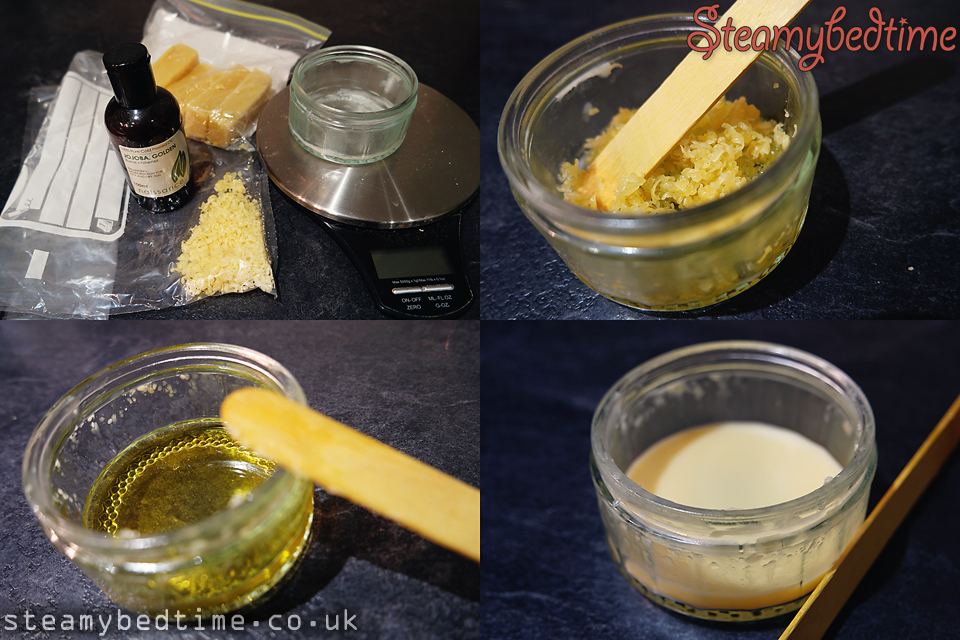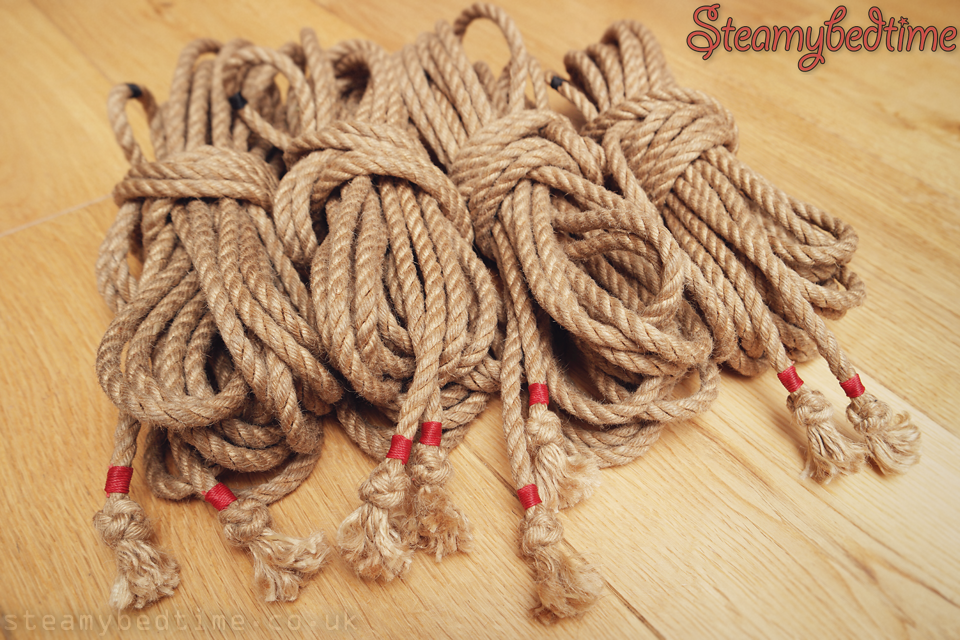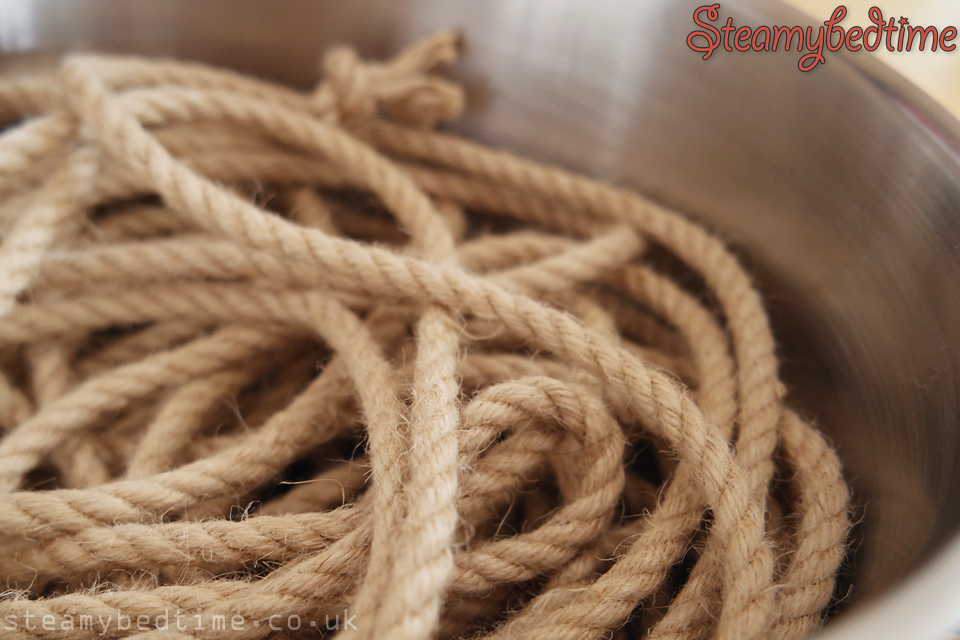Types of Rope
I guess like many couples, our first ever rope was a Bondage Boutique Red Cotton Rope from Lovehoney. It's soft, a little bit stretchy, but very comfortable against your skin and you can have fun wrapping up your partner in some nice patterns. The colours are great and so it looks nice against skin and lingerie.
It has plenty of fun potential for bedroom and western style bondage, but for a more authentic exploration of shibari techniques, you should seriously consider looking at Jute or Hemp ropes.
Just before Christmas of 2016 we treated ourselves to our first "real" ropes, a set of 6 Okinawa Jute ropes from Esinem-Rope. We chose it as it had a moderately tight lay and sounded as if it would be quite a robust rope while we were starting out, needing only a basic dry treatment before use.
Preparing Your Rope
We described our preparation of these Okinawa ropes in the article: Preparation of Okinawa Jute Rope. In summary, we based our approach on the following three resources.
- Shibari Classes (Free rope preparation tutorial)
- Wykd Dave Rope Treatment (YouTube)
- Bondage Erotique (Vimeo)

Without repeating too much of our earlier blog posts, a couple of things that I think we'd have appreciated knowing beforehand would have been: the untreated rope felt horribly stiff and unworkable and you'll need to put in some effort before it's ready to use. Secondly, we were being very cautious not to over-oil or excessively-wax the new ropes. That's fundamentally good advice, but it meant we had to repeat the process a few times before the rope really started to feel good; so be prepared to take your time.
We gave a complete rundown of our (first time) experiences treating rope in this article: Preparation of Okinawa Jute Rope.
In the Shibari Classes course on treating rope, Esinem closes with the advice "it's a labour of love, but well worth it". This completely summed up our first experience with rope treatment.
Caring For Your Rope
I think we were a little sceptical at first, but it's absolutely true that the feel of the rope continues to improve with use. The natural process of tying, forming and releasing knots and frictions, passing the rope through your hands, and the natural tendency of the fibres to absorb oils from skin, leads to a maturing of the rope. It's hard to describe, but it really does develop over time.
However, a couple of times there have been less desirable changes in the feel of the rope, something akin to a slight dryness, and in due course the rope has felt just a little less flexible than before. It may be due to storage, atmospherics, or simply where we've not used them for a couple of weeks. On these occasions we've found a light rub down with jojoba oil has been enough to get the rope feeling nice again.

Another piece of maintenance to our ropes was replacing the overhand end-knots with thistle knots, combined with a contrasting band of red whipping twine. We described our method at the end of the article, Gote Shibari and Stem Practice.
At the same time we added a black band of whipping twine to the centre of the rope. I'm not sure whether this is a particularly common practice, but as beginners we've found it a useful means of confirming when we are at the exact centre of a rope.
Summary
Our overall conclusion is that if you want to experiment with rope, you're probably going to end up spending at least £10 on some basic, coloured cotton rope. I'd say stop right there, and consider potentially spending an extra couple of pounds on some really high quality jute. I guarantee you'll thank me in the long run! ;-)
At the time of writing (4th April 2018) you can buy a set of 4 Tossa Lite 5.5mm jute ropes from Esinem-Rope at just under £37, or £9.25 each, and free worldwide delivery...
References
In preparing our ropes, these are a few of the articles we've already written up and one of the resources we found most helpful.
- Article describing our Preparation of Okinawa Jute Rope (Esinem-Rope)
- Article describing our Treatment and Maintenance of Rope (raw spool of jute)
- Our earlier book review: Shin Nawakiri's Essence of Shibari
- Free course at ShibariClasses: Rope Care and Treatment
Okinawa Jute remains our most frequently used rope and it came from Esinem-Rope. It required very little preparation, but we did choose to lightly wax and oil it - as described in the article above.
Next week we'll describe our method for hanking rope with a simple slipknot, so that it's easily handled and immediately ready for use whenever needed...







